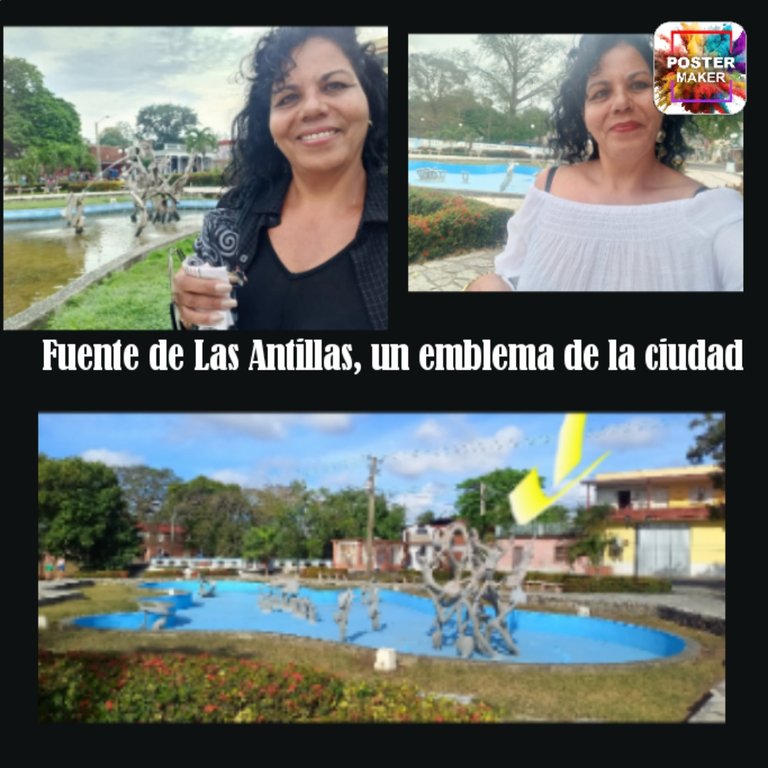
Las Tunas es una ciudad sencilla con la arquitectura típica de las ciudades nacidas en la etapa colonial y las sucesivas mezclas de estilos producto de los tres incendios, generando un eclecticismo sin muchas petrenciones artísticas.
Aquí se asentaron hacendados de las regiones cercanas, zona ganadera y agrícola por tanto la población fundamental es la rural.
La ciudad de Las Tunas ostenta un crecimiento a partir de la década del 1970, con la creación de instituciones educacionales, culturales, de salud y económicas. Hasta aquí vinieron tambien, artistas de toda Cuba a propósito de los Encuentros de Esculturas, con la guía de la reconocida escultora cubana Rita Longa Arostegui.
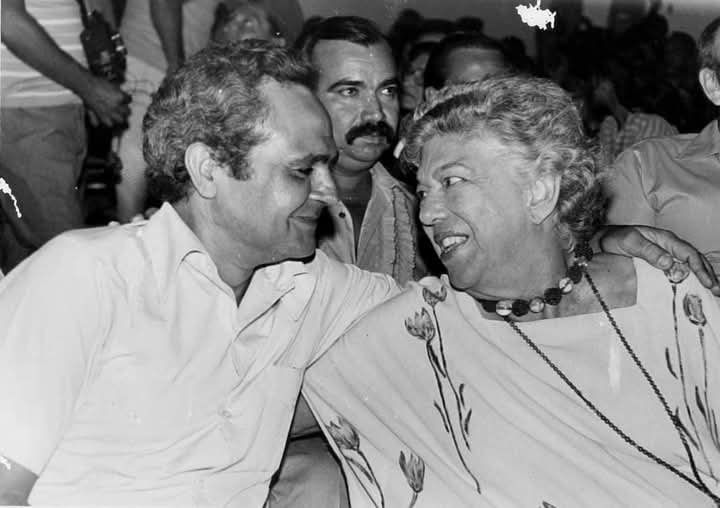
Rita Longa con Rafael Ferrero, fotografía del Archivo
Rita Longa, nació el 14 de junio de 1912, en Surgidero de Batabanó. Su recorrido por varias décadas constituye pieza clave en el viraje hacia nuevas expresiones, lecturas del arte y sobre todo en el posicionamiento de la mujer como ente definitorio en todos los sistemas. Rita Longa murió el 29 de mayo del 2000, a la edad de 87 años, amén de premios y distinciones oficiales, su obra toda debía ser declarada Patrimonio Cultural de la Nación.
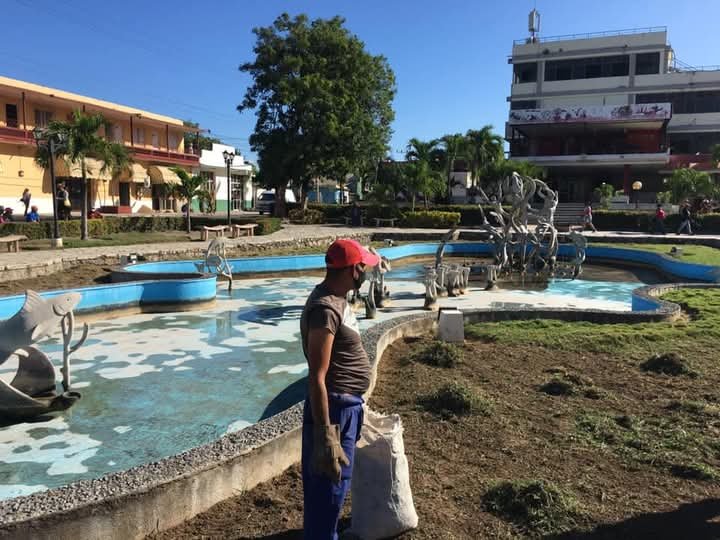
En 1927 comenzó los estudios en la Academia de Bellas Artes, San Alejandro y muy pronto su nombre se relacionó con la oleada vanguardista que pujaba por fragmentar la creación meramente académica.
Luego la artista se multiplicó en infinidades de esculturas por toda la isla, Aldea Taína, en Guamá; El gallo de Morón, en la ciudad homónima; La Virgen del Camino, Los Venados, Bailarina, en La Habana; la Fuente de Las Antillas y Martí, en Las Tunas.
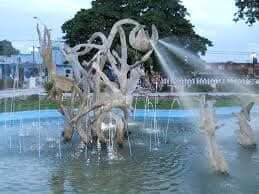
A su labor de promoción y fomento de la Escultura se sumó el túnero Rafael Ferrero Lores.
De estos encuentros surgió la idea de emplazar en Las Tunas una de las obras más importantes de Rita Longa: La Fuente de Las Antillas. Todos los tuneros conocen de la existencia de este conjunto escultórico, conocen la leyenda que encarna y la importancia patrimonial de la misma.
He escrito varios artículos para periódicos y revistas sobre la Fuente de Las Antillas, si desean consulten esta fuente
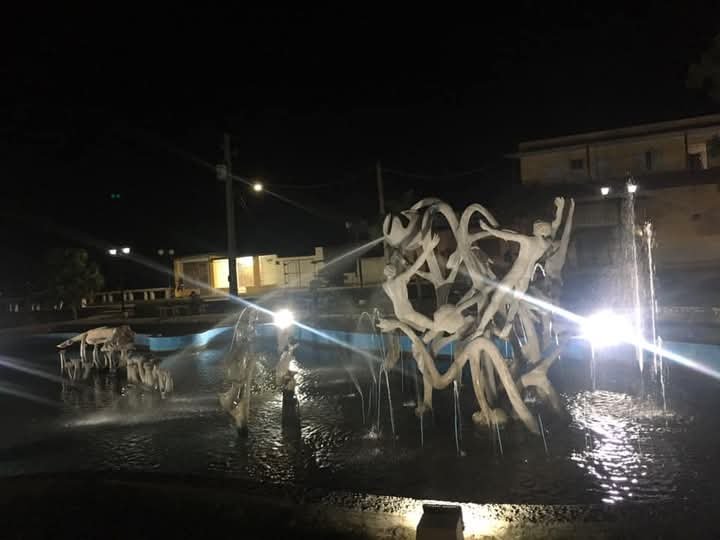
Rita Longa realizó el proyecto de la Fuente de Las Antillas para la esquina de 23 y L en el Vedado, luego el proyecto elegido fue el de Copellia, así vino La Fuente y su leyenda a convivir a las márgenes del río Hormigo en esta ciudad oriental Balcón del Oriente Cubano.
Con el tiempo y el número de esculturas emplazas, la nombraron Capital de la Escultura Cubana
La fuente de Las Antillas fue inaugurada el 24 de febrero de 1977 y su conjunto recrea una leyenda taína que reza que el Cacique Jaías, oriundo de unas de las islas del mar Caribe, tenía un hijo que al morir èl da sepultura en una calabaza custodiada celosamente con la esperanza de la resurrección.
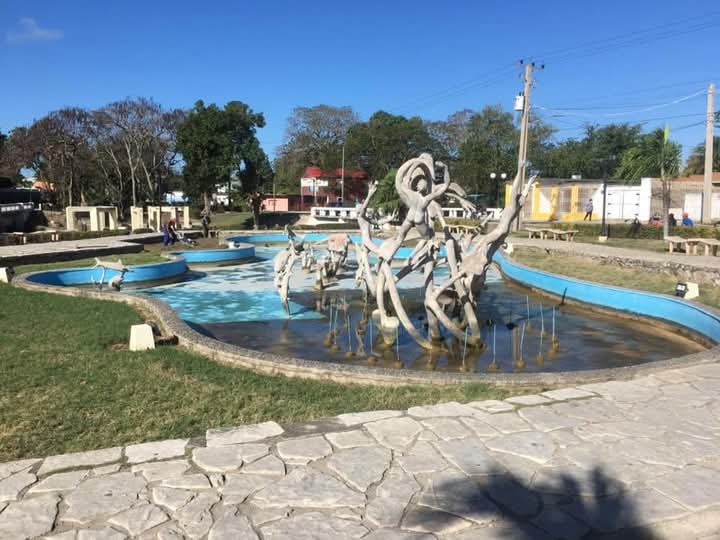
La calabaza como símbolo de fertilidad, mantendría con vida al joven heredero. En un descuido otros jóvenes intentan tomar la calabaza y está rompe como una fuente nutrida de plantas y peces. Según la leyenda así surgieron las islas antillanas.
La fuente está rodeada de un hermoso entorno, el río, la vegetación y una ciudad que la agradece.
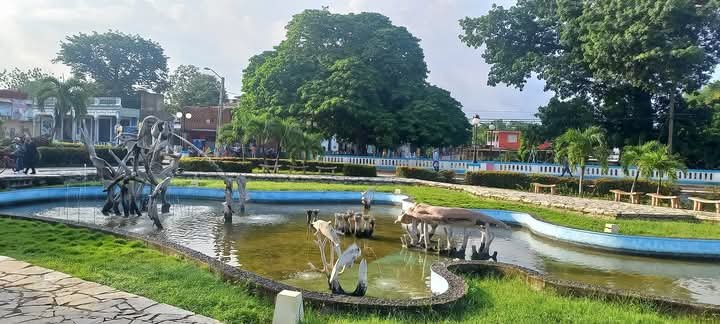
Esta publicación ha sido escrita y documentada por mí, no contiene IA. Las fotos utilizadas son de mi propiedad
English
In Las Tunas there is a beautiful fountain
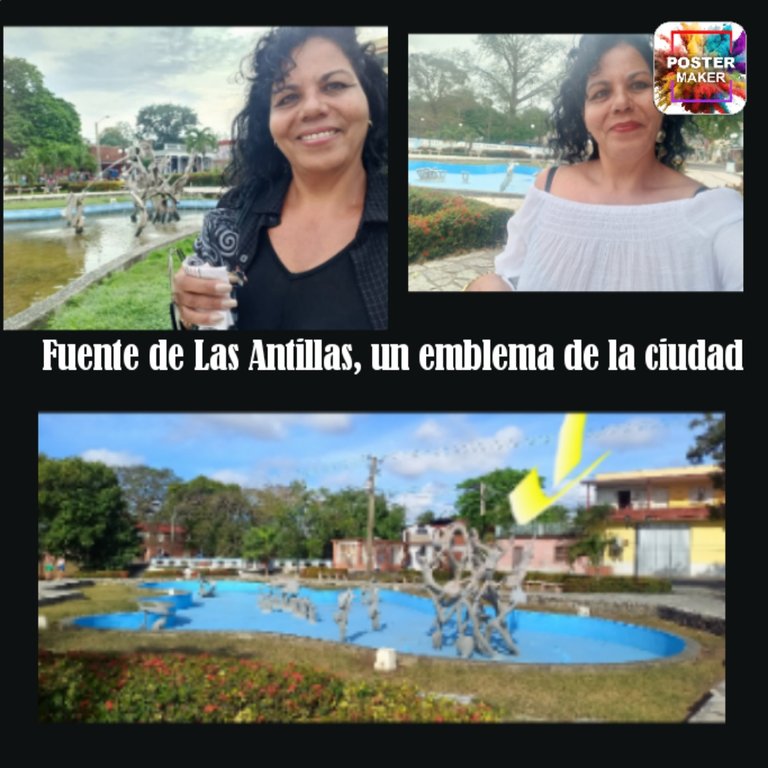
Las Tunas is a simple city with the typical architecture of cities born in the colonial period and the successive mixtures of styles resulting from the three fires, generating an eclecticism without many artistic pretensions. Landowners from nearby regions, livestock and agricultural areas, settled here, therefore the fundamental population is rural.
The city of Las Tunas has grown since the 1970s, with the creation of educational, cultural, health and economic institutions. Artists from all over Cuba also came here for the Sculpture Meetings, with the guidance of the renowned Cuban sculptor Rita Longa Arostegui.

Rita Longa and Rafael Ferrero, archive photography
Rita Longa was born on June 14, 1912, in Surgidero de Batabanó. Its journey over several decades constitutes a key piece in the shift towards new expressions, readings of art and, above all, in the positioning of women as a defining entity in all systems.
Died on May 29, 2000, at the age of 87. In addition to official awards and distinctions, her entire work had to be declared Cultural Heritage of the Nation. In 1927 he began his studies at the Academy of Fine Arts, San Alejandro and very soon his name was related to the avant-garde wave that sought to fragment purely academic creation.

In 1927 he began his studies at the Academy of Fine Arts, San Alejandro and very soon his name was related to the avant-garde wave that sought to fragment purely academic creation.
Then the artist multiplied herself in countless sculptures throughout the island, Aldea Taína, in Guamá; The rooster of Morón, in the city of the same name; The Virgin of the Camino, Los Venados, Dancer, in Havana; the Fuente de Las Antillas y Martí, in Las Tunas.

Tuner Rafael Ferrero Lores joined his work in promoting and encouraging Sculpture. From these meetings arose the idea of placing one of Rita Longa's most important works in Las Tunas: La Fuente de Las Antillas. All Las Tunas people know of the existence of this sculptural group, they know the legend it embodies and its heritage importance. I have written several articles for newspapers and magazines about the Fuente de Las Antillas, if you wish, consult this fuente

Rita Longa carried out the project of the Fuente de Las Antillas for the corner of 23rd and L in Vedado, then the chosen project was that of Copellia, this is how La Fuente and its legend came to coexist on the banks of the Hormigo River in this eastern city Balcón del Oriente Cubano.
With time and the number of sculptures placed, they named it Capital of Cuban Sculpture The Las Antillas fountain was inaugurated on February 24, 1977 and its complex recreates a Taíno legend that says that Chief Jaías, a native of one of the islands in the Caribbean Sea, had a son who, when he died, he buried in a jealously guarded calabash with the hope of resurrection.

The pumpkin as a symbol of fertility would keep the young heir alive. Inadvertently, other young people try to take the pumpkin and it becomes a nutritious source of plants and fish. According to legend, this is how the Antillean islands emerged.
The fountain is surrounded by a beautiful environment, the river, the vegetation and a city that appreciates it.

This post has been written and documented by me, it does not contain AI. The photos used are my property

You can check out this post and your own profile on the map. Be part of the Worldmappin Community and join our Discord Channel to get in touch with other travelers, ask questions or just be updated on our latest features.
Esas esculturas son uno de.los pequeños- grandes encantos de las Tunas, me gustó saber la leyenda detrás de la Fuente, no la conocía, que honor el tuyo de saber todas estas cosas de primera mano. Gracias por compartirlas aquí
Que hermoso lugar. Gracias
Un día vendrás. Gracias a ti
The architecture is absolutely stunning, it's so beautiful ❤️
A unique work of art in a simple city. thank you for your acceptance
You're welcome friend ❤️
Veo dos fuentes hermosas; la de Rita, y tú.
Ay que gentil eres, yo postergando en esa belleza